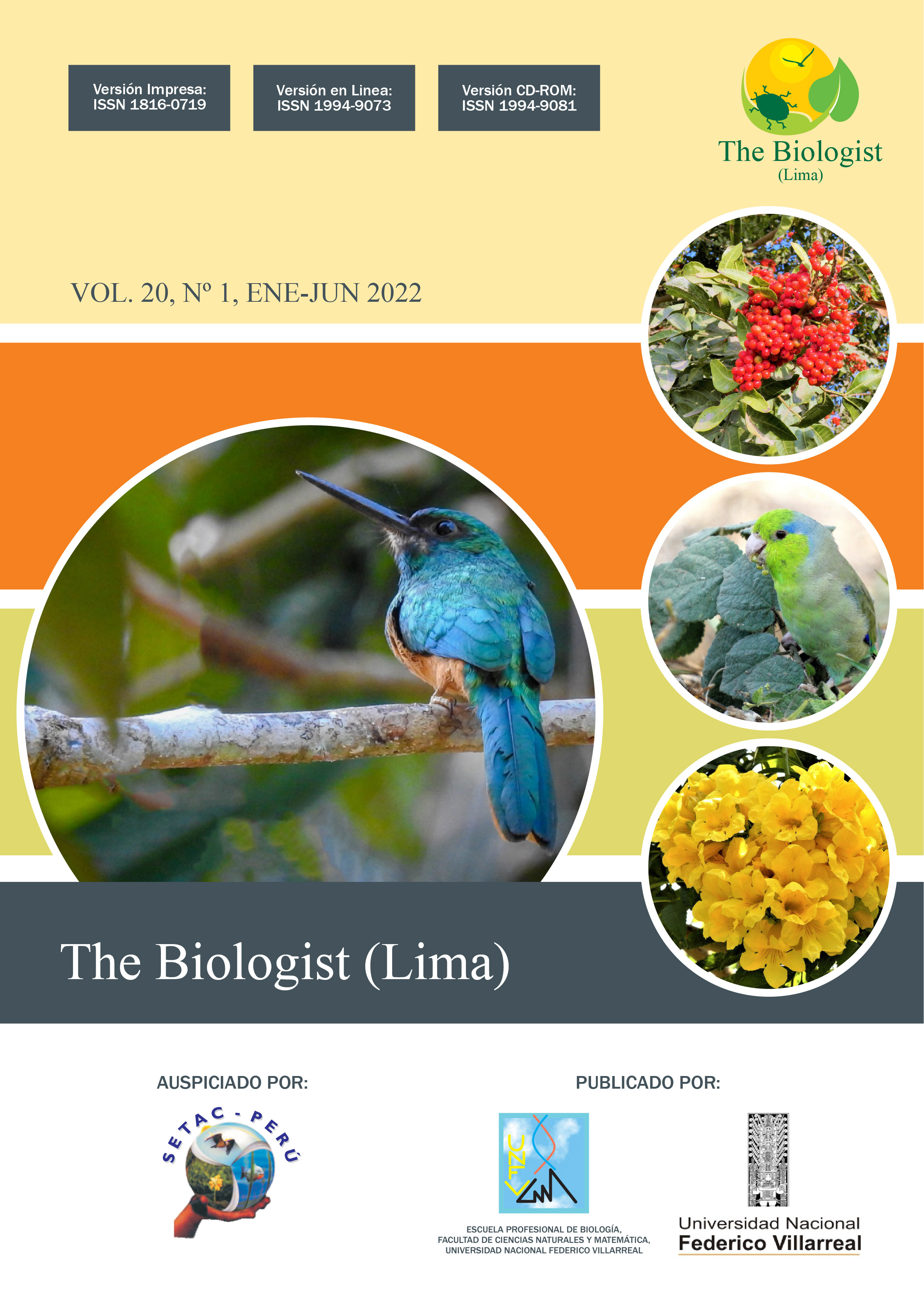LENGTH-WEIGHT RELATIONSHIPS OF 26 FISH SPECIES FROM ARTISANAL FISHERY IN ECUADOR
DOI:
https://doi.org/10.24039/rtb20222011267Keywords:
fishing gears, Ecuadorian mainland, fishery resources, power modelAbstract
The length-weight relationship is usable for estimating biomass of organisms, determining the “wellbeing” of the individual and as input data in stock assessment models. The objective of this work was to establish the length-weight relationship of 26 species of fish present in artisanal fishery along the Ecuadorian continental coast. Total length and weight were recorded monthly, between 2012 and 2014, at sampling sites located in the coastal provinces of Ecuador. The length-weight relationship was estimated using the power model. A total of 24 commercials and two non-commercial species were analyzed, including demersal and benthic organisms. The value of the intercept was less than 0.03, while the coefficient of determination was greater than 0.98. The slope values showed three species with negative allometry (b < 3), nine species with positive allometry (b > 3) and 14 species with isometry (b = 3). Allometry is a specific characteristic of the species and intraspecific variations can be related to genetically determined effects, as well as, by sex, stage of maturity, spawning period. The parameters of the length-weight relationship presented should be taken with caution considering that they are given regardless of sex.
Downloads
Published
How to Cite
Issue
Section
License

This work is licensed under a Creative Commons Attribution-NonCommercial-NoDerivatives 4.0 International License.
Objeto: El AUTOR-CEDENTE transfiere de manera TOTAL Y SIN LIMITACIÓN alguna al CESIONARIO (Revista The Biologist (Lima)) los derechos patrimoniales que le corresponden sobre sus obras por el tiempo que establezca la ley internacional. En virtud de lo anterior, se entiende que el CESIONARIO adquiere el derecho de reproducción en todas sus modalidades, incluso para inclusión audiovisual; el derecho de transformación o adaptación, comunicación pública, traducción, distribución y, en general, cualquier tipo de explotación que de las obras se pueda realizar por cualquier medio conocido o por conocer en el territorio nacional o internacional.
Remuneración: La cesión de los derechos patrimoniales de autor que mediante este contrato se hace será a título gratuito.
Condiciones y legitimidad de los derechos: El AUTOR-CEDENTE garantiza que es propietario integral de los derechos de explotación de la(s) obra(s) y en consecuencia garantiza que puede contratar y transferir los derechos aquí cedidos sin ningún tipo de limitación por no tener ningún tipo de gravamen, limitación o disposición. En todo caso, responderá por cualquier reclamo que en materia de derecho de autor se pueda presentar, exonerando de cualquier responsabilidad al CESIONARIO.
Licencia de acceso abierto: El AUTOR-CEDENTE autoriza que manuscrito publicado en la Revista Científica The Biologist (Lima) (versión Impresa ISSN 1816-0719, versión en línea ISSN 1994-9073) permanece disponible para su consulta pública en el sitio web http://revistas.unfv.edu.pe/index.php/rtb/index y en los diferentes sistemas de indexación y bases de datos en las que la revista tiene visibilidad, bajo la licencia Creative Commons, en la modalidad Reconocimiento-No comercial- Sin Trabajos derivados –aprobada en Perú, y por lo tanto son de acceso abierto. De ahí que los autores dan, sin derecho a retribución económica, a la Escuela Profesional de Biología, Facultad de Ciencias Naturales y Matemática de la Universidad Nacional Federico Villarreal (EPB - FCCNM - UNFV), los derechos de autor para la edición y reproducción a través de diferentes medios de difusión.









































